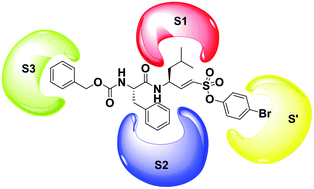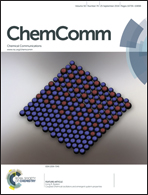Development of a highly potent, selective, and cell-active Inhibitor of cysteine cathepsin L–A hybrid design approach†
Abstract
A hybrid-design approach is undertaken to develop a highly potent and selective inhibitor of human cathepsin L. Studies involving human breast carcinoma MDA-MB-231 cells establish that this inhibitor can successfully block intracellular cathepsin L activity, and retard the cell-migratory potential of these highly metastatic cells.


 Please wait while we load your content...
Please wait while we load your content...